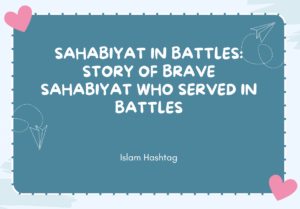Where to stop in Quran? Rules of Waqf
Waqf means stopping. It is Important to know where to start and where to stop when reading the Quran to avoid making fatal pronunciation mistakes or changing the entire meaning.
Scholars have put in place symbols and rules to help the reciter stop on the correct meaning when reading Quran
How to complete the Quran in 30 days
Where to stop in Quran? (Waqf) Signs

Some of these symbols are:
⃝ – The Conclusion of Verse
The “Waqf e Taam” marks the finish of a specific verse in Furqan e Hameed. In Arabic, this is known as the “Perfect Stop”. It represents a circle at the end of a Quranic line. The reciter must take a breath here before continuing reading. Additionally, the verse shows that the message has been delivered completely in that sentence, so the narrator should review the verse, grasp its meaning and prepare for the following lines.
مـ – The Compulsory Stop
Waqf e Laazim, which means to do so at any cost, binds the reader to stop reading at this point. If one does not pause here, the entire meaning of this sentence will change drastically.
ط – The Absolute Pause
“Waqf e Mutlaq” is a stop sign that indicates to the reader to take a break and discontinue reciting a long passage for an instantaneous period. By fully grasping the meaning of the text that you have already read, it makes the reading process easier.
ج – The Permissible Stop
““Waqf e Jaaiz” indicates that the matter discussed in that fragment of the Ayah has been completed, which means one must stop here, even though it is not mandatory, so that the meaning discussed in the previous part may be absorbed, and the reader can prepare to learn about new matter in the following section.
ز – Continue Reading
In the case of “Waqf e Mujawwaz,” there is no need to pause during recital, although stopping is not forbidden.
ص – The Licensed Pause
“ Waqf e Murakh-khas” allows the reader to take a break if he or she becomes tired, but it is highly advisable to continue reading in any case.
صلي– Preference for Continuation
“Al-wasl Awlaa” means to recite the verses continuously without stopping.
ق – Better not to Stop
“Qeela ‘Alayhil-Waqf’ means don’t stop reciting the verses, although there are differing opinions on whether to stop.
صل – The Permissible Pause
“Qad Yusal” specifies that it is permissible to continue reading although one should stop here.
قف – The Anticipation Mark
The word “Qif” appears on the stop sign when a pause might be appropriate.
س – The Silence Symbol
“Saktah” is a sign that asks the reader to take a short pause before continuing to read.
وقفتہ – The Long Pause
“ Waqfah” is a longer break than Saktah with the same gist of not stopping to catch one’s breath.
لا – No Need of Stopping
If “Laa” is used at the end of ayah with a circle mark of conclusion, one should continue reading the verses rather than stop reading them at this sign of “Laa” since it would change the meaning of Quranic lines altogether.
ك – Similar Meaning as Previous Sign
“kadhaalik” or “like that” implies the same action implied by the preceding symbol.
∴ – The Embracing Stop
“Mu’aanaqah” is a sign that signifies to stop at any of the multiples in it, without discontinuing simultaneously.


Discover more from Islam Hashtag
Subscribe to get the latest posts sent to your email.




